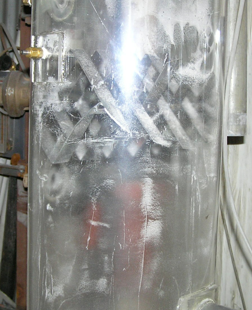
June 22, 2010
Internals are added to fluidized beds for several reasons. The most common reason is to add heat or to remove heat from a bed using horizontal or vertical heat transfer tubes. Another common reason is to add internals to strippers to stage the bed in order to improve stripping efficiency. It is also becoming increasingly evident that the addition of internals can improve the operation of fluidized bed reactors. Some examples are: 1) adding internals (baffles) to prevent gas bypassing in deep fluidized beds, 2) adding internals to stage the bed to make it operate more like a plug flow reactor, and 3) adding internals to reduce bubble sizes in fluidized beds.
However, knowledge about internal baffles in fluidized beds is far from complete. For example, it is not known how close together vertical heat transfer tubes can be located without affecting solids circulation. Does this distance change with particle size? Also, it is not known just how horizontal baffles affect gas/solids distribution. It is thought that they improve it, but is this a function of gas velocity, particle size, etc.? In addition, it is not known how internals may affect the entrainment from a fluidized bed. Can they significantly reduce entrainment?
The objectives of the Internals Research Program are:
-
•Determine the effects of horizontal and vertical internals (baffles) on fluidized bed hydrodynamics (bubble size, bubble void fraction, bed density, gas RTD, solids RTD, entrainment rate, and heat transfer coefficient) of Geldart Groups A, B and AC materials,
-
•Determine the forces imposed on the bed internals by the fluidized bed,
-
•Determine the effect of bed internals (tubes, baffles) on fluidized bed operation as a function of gas velocity, from a low-velocity bubbling bed through the turbulent regime, and
-
•Determine the effects of internals type (disk and doughnut, sheds, structured packing, and subway grating), internals open area, gas velocity, solids flux and inlet, and outlet stripper geometry on stripper operation (stripping efficiency).

